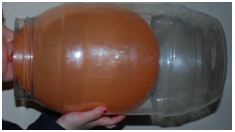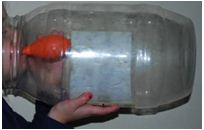Types of Tanks – Expansion and Compression Tanks – Part 7
Bladder tanks, diaphragm tanks, and standard ASME tanks: What is the difference and when should I use them? Let’s start with ASME. In commercial and institutional applications, ASHRAE, as well as most codes require the pressure vessels carry an ASME U stamp. This assures the owner and the owner’s insurance carrier that the vessel was inspected by an independent appraiser and registered with the National Board. Bladder, diaphragm, and standard tanks are all available stamped with the ASME U stamp.
|
Bladder expansion tanks normally have a membrane inside of them. We can think of it as a balloon inside a tank. The expanded water goes into the balloon and the air is on the outside of the balloon. Bell and Gossett series “B” bladder tanks are ASME constructed and are designed to be supported on the floor. The “balloon” or bladder can expand to the entire volume of the tank so the tank volume and acceptance volume are the same. The separation between the air and water is mechanical.
|
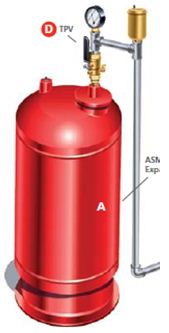 |
|
Diaphragm expansion tanks have a physical barrier inside the tank which acts to limit the expansion of the diaphragm. Bell and Gossett “D” style diaphragm tanks are ASME constructed and designed for either horizontal or vertical installation. The only difference is the location of the drain fitting. The “diaphragm” is limited in movement and, therefore, the acceptance volume is less than the tank volume. The separation between the air and water is mechanical.
|
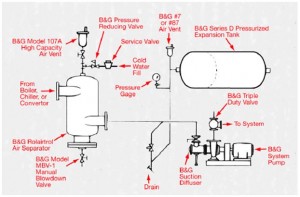 |
|
ASME standard or plain steel compression tanks have nothing inside of them but air. These tanks, gallon for gallon, are less expensive than the bladder style tanks. They are mounted above the air separator and normally supported from the ceiling.
Diagrams and tank photographs are taken from the Bell and Gossett A-305G literature. |
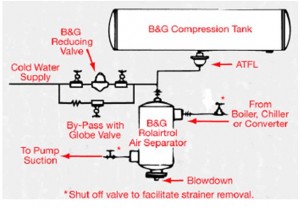 |
|
Next time we continue where to use which tank.
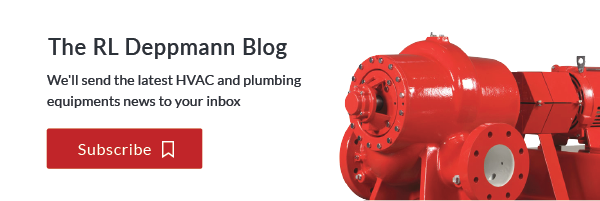
Disclaimer: R. L. Deppmann and it’s affiliates can not be held liable for issues caused by use of the information on this page. While the information comes from many years of experience and can be a valuable tool, it may not take into account special circumstances in your system and we therefore can not take responsibility for actions that result from this information. Please feel free to contact us if you do have any questions.

